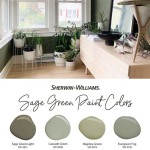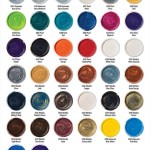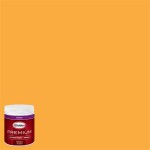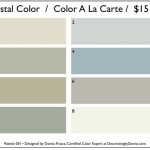How To Choose The Right Exterior Paint Color
Selecting the right exterior paint color for a house is a significant decision that impacts curb appeal, property value, and overall aesthetic satisfaction. The exterior paint color sets the tone for the property and reflects the homeowner’s personal style. This decision requires thoughtful consideration of various factors, including architectural style, surrounding environment, neighborhood context, and the psychological effects of color. Ignoring these elements can result in a finished product that feels disjointed or clashes with the surroundings.
The color of a house’s exterior is more than just a cosmetic choice; it is an investment that can protect the structure from the elements, influence energy efficiency, and create a lasting impression. A well-chosen color palette can enhance the architectural features of a house, making it stand out for the right reasons. Conversely, a poorly chosen color can detract from the property’s inherent beauty and potentially lower its perceived value. Therefore, approaching this task with a strategic and informed mindset is crucial.
Successfully navigating the myriad of paint color options requires a comprehensive understanding of color theory, material properties, and environmental conditions. The following points will provide a structured approach to choosing the ideal exterior paint color, ensuring a harmonious and visually appealing result.
Understanding Architectural Style and Historical Context
The architectural style of a house plays a pivotal role in determining appropriate exterior paint colors. Different architectural styles have historical associations with specific color palettes, and adhering to these can maintain the integrity and authenticity of the design. For example, a Victorian-era home typically benefits from a complex color scheme with multiple hues to accentuate its ornate details, while a modern contemporary home often looks best with a minimalist palette of neutral colors.
Consider the historical context of the house. Researching the original color schemes used during the building’s period can offer valuable insights. Historical societies and local libraries often have resources that document the common paint colors employed in specific eras and regions. This research can help to inform decisions and ensure that the chosen color aligns with the building's architectural heritage.
Furthermore, analyze the existing architectural elements of the house. The color of the roof, brickwork, stone accents, and trim should all be considered when choosing an exterior paint color. These fixed elements serve as a starting point for developing a cohesive color scheme. The chosen paint color should complement these existing features, creating a harmonious and unified appearance. For instance, if the house has a red brick foundation, selecting a paint color that clashes with the red tones would be detrimental to the overall aesthetic.
Beyond the primary color, consider the trim colors as well. The trim color can either blend seamlessly with the main color for a subtle look or provide a contrasting accent to highlight architectural details. For Victorian homes, using multiple trim colors is common, while simpler architectural styles may benefit from a single, understated trim color. Careful consideration of the trim color can significantly enhance the visual appeal and architectural character of the house.
It is also important to understand the impact of sunlight on different colors. The same color can appear drastically different depending on the direction the house faces and the amount of sunlight it receives. Colors tend to appear brighter and warmer in direct sunlight, while they may appear cooler and darker in shaded areas. Therefore, it is essential to test paint samples in various lighting conditions before making a final decision. This will ensure that the chosen color looks appealing throughout the day and under different weather conditions.
Considering the Surrounding Environment and Neighborhood
The surrounding environment should heavily influence the exterior paint color choice. A house should blend harmoniously with its natural surroundings, creating a cohesive and visually pleasing landscape. Consider the colors of the trees, vegetation, and surrounding terrain when selecting a paint color. For example, a house located in a wooded area might benefit from earthy tones like greens, browns, and beiges, while a house located near the ocean might look best with coastal-inspired hues like blues, grays, and whites.
The neighborhood context is another crucial factor to consider. While it is important to express personal style, it is also important to maintain a sense of harmony with the surrounding houses. Avoid choosing a color that clashes dramatically with the neighboring properties or stands out in a way that is visually jarring. However, this does not mean that all houses in a neighborhood should look identical. Instead, aim for a color that complements the existing palette while still reflecting individual taste.
Examine the existing color schemes of the neighboring houses. Identify common color themes or patterns in the neighborhood and consider how the chosen color will fit within this context. A subtle variation of a common color can create a sense of unity while still allowing for individual expression. Alternatively, a complementary color scheme can provide a pleasing contrast without disrupting the overall aesthetic harmony of the neighborhood.
Consider the potential impact of the chosen color on the overall property value. While personal preference is important, it is also crucial to choose a color that will appeal to potential buyers in the future. Neutral colors like grays, beiges, and whites are generally considered safe options that have broad appeal. Bold or unconventional colors may be visually striking, but they could potentially limit the resale value of the property. Researching local real estate trends and consulting with a real estate professional can provide valuable insights into the most desirable exterior paint colors in the area.
The climate and geographical location also play a significant role. In sunny climates, lighter colors can help to reflect sunlight and keep the house cooler, while in colder climates, darker colors can absorb heat and help to warm the house. However, darker colors can also fade more quickly in direct sunlight, so it is important to choose a high-quality paint that is resistant to fading. Consider the specific climate conditions and choose a paint that is appropriate for the local environment.
Understanding Color Theory and Psychological Effects
A basic understanding of color theory is essential for choosing an exterior paint color that is both aesthetically pleasing and psychologically impactful. Color theory explores the relationships between colors and how they can be combined to create different effects. Understanding concepts like complementary colors, analogous colors, and color harmony can help to create a visually appealing and balanced color scheme.
Consider the psychological effects of different colors. Colors can evoke specific emotions and moods, and choosing a color that aligns with the desired atmosphere is important. For example, blue is often associated with calmness and serenity, while yellow is associated with happiness and optimism. Green is often associated with nature and tranquility, while red is associated with energy and excitement. Understanding these associations can help to choose a color that creates the desired mood and ambiance for the house.
When choosing a color, consider the undertones. Undertones are the subtle hues that are present within a color, and they can significantly affect how the color appears in different lighting conditions. For example, a gray color might have blue, green, or beige undertones. Understanding the undertones of a color is crucial for creating a harmonious color scheme. To identify the undertones, compare the color to a pure white swatch. This will help to reveal the subtle hues that are present.
Utilize the color wheel as a tool for exploring different color combinations. The color wheel illustrates the relationships between colors and can help to identify complementary and analogous colors. Complementary colors are located opposite each other on the color wheel and create a vibrant contrast when used together. Analogous colors are located next to each other on the color wheel and create a harmonious and cohesive look. Experimenting with different color combinations using the color wheel can help to create a visually appealing and balanced color scheme.
Always test paint samples before making a final decision. Paint colors can appear drastically different depending on the lighting conditions, the surrounding environment, and the surface they are applied to. Purchase small samples of the chosen colors and paint them onto different areas of the house. Observe the colors throughout the day and under different weather conditions to see how they appear in various lighting situations. This will help to avoid costly mistakes and ensure that the chosen color is truly the right choice for the house.
Furthermore, consider the sheen of the paint. The sheen of the paint refers to its level of shine, and it can affect the appearance and durability of the finish. Exterior paints typically come in satin, eggshell, or flat sheens. Satin sheens are more durable and easier to clean, making them a good choice for trim and doors. Eggshell sheens are slightly less shiny than satin and are often used for siding. Flat sheens have the least amount of shine and are often used for surfaces that need to be concealed, such as textured walls. Choosing the right sheen can enhance the appearance and longevity of the exterior paint job.

How To Choose The Right Exterior Color For Your Home

How To Choose The Right Exterior Paint Colors K Painting

How To Choose Paint Colors For Your Home Resources You Should Use

5 Tips For Choosing Exterior Paint Colors Arizona Painting Company

How To Choose The Right Exterior Paint Colors For Your Home

How To Choose The Right Exterior Paint Color Glenn Layton Homes

How To Choose The Right Paint Color For Exterior Of A Home

Choosing Exterior Paint Colors Tips For Picking The Perfect Palette

68 Home Exterior Paint Color Ideas Tips

How To Choose The Right Exterior Paint Colors House For Color Combinations
Related Posts








